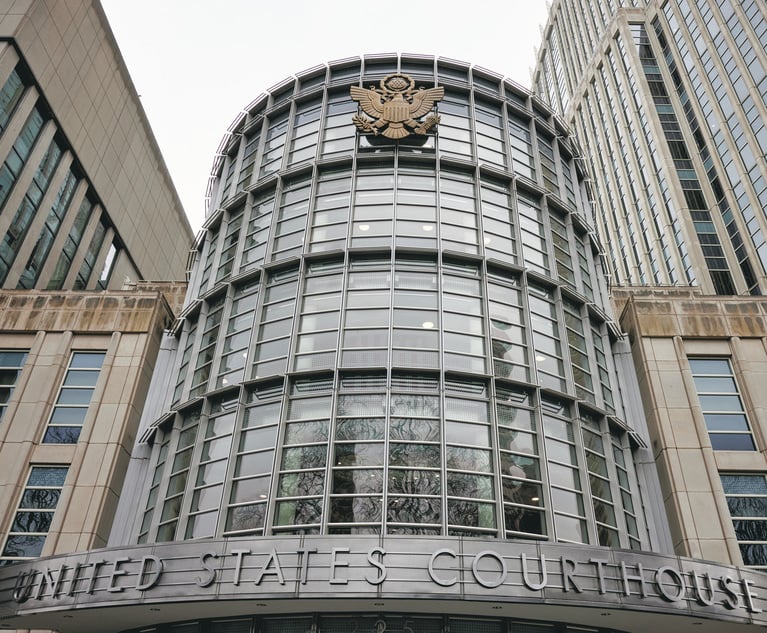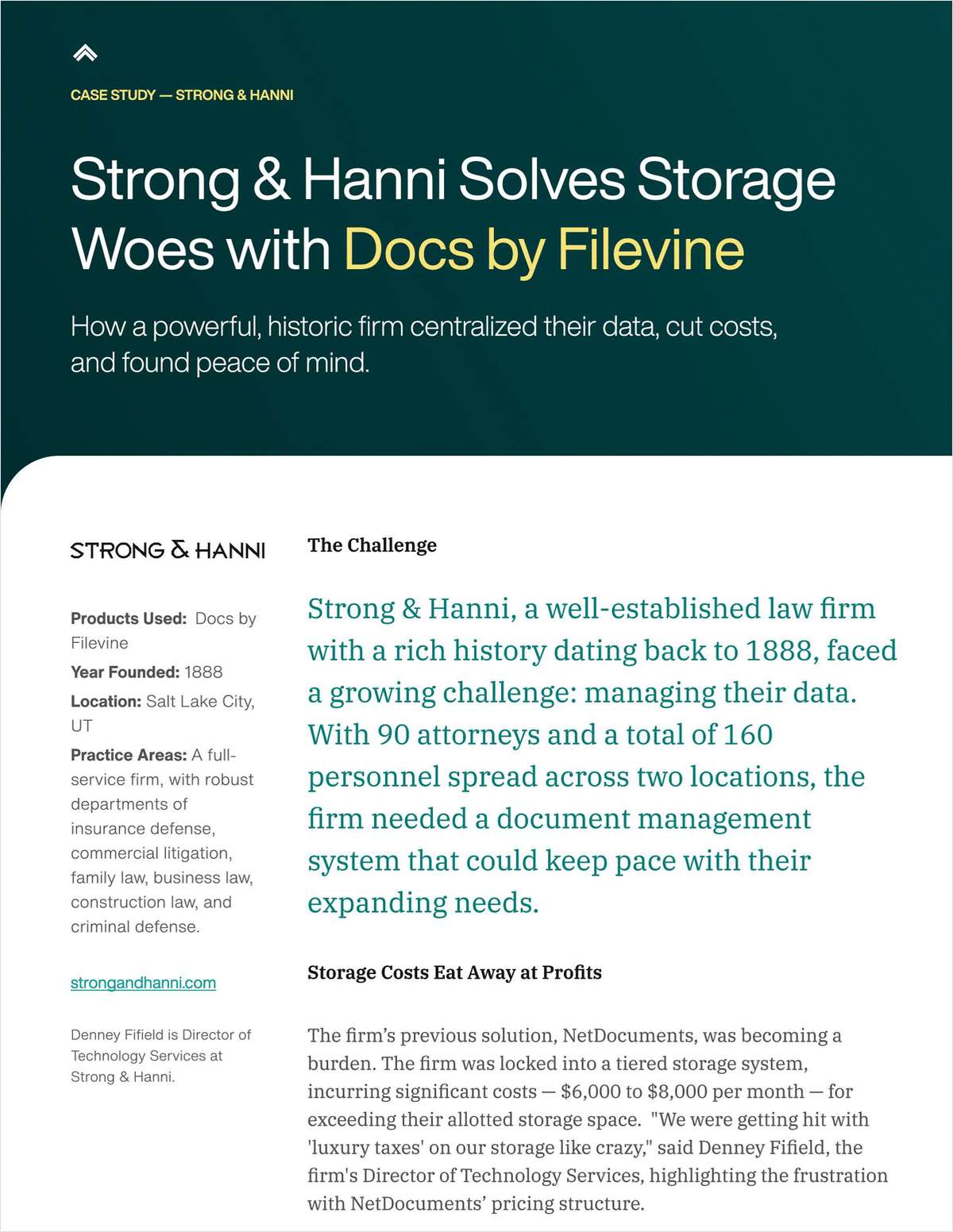Women Hold Editor-in-Chief Positions at the 16 Most Elite Law Reviews
The work that law schools and law journals have done in recent years to foster more diverse memberships is paying off with women taking the top editorial post of the flagship law journals at the highest-ranked schools in the country.
January 21, 2020 at 03:52 PM
4 minute read
 Melissa Murray. (Photo: Jason Doiy/ALM.)
Melissa Murray. (Photo: Jason Doiy/ALM.)
It's a major moment for women at top law journals.
For the first time ever, female law students sit atop of the mastheads of the flagship law reviews at each of the top 16 law schools in the country, as ranked by U.S. News & World Report.
That's a significant shift from 2012, when a study by the nonprofit group Ms. JD found that women comprised just 29% of top editors at the flagship journals housed at the top 50 law schools. Women made up 43% of all law review editors in 2012 and 45% of all law review members.
Editor-in-chief posts are the most competitive to get and one of the most prestigious credentials law students can put on their resume. Executive board positions, including editor-in-chief, are typically determined through elections among the law review membership, meaning editors are selected by their peers. The sweep of editor-in-chief spots by women among the T-14 law schools has people talking.
"It speaks well to the progress that many law schools have made toward cultivating a more hospitable environment for women, people of color, and first-generation law students," said Melissa Murray, a professor at New York University School of Law. "But credit should not go to law schools alone. The law reviews deserve credit as well."
Murray noted that many law journals have taken a hard look at whether they are fostering environments that include traditionally underrepresented students and encourage them to take on leadership roles.
The flagship law reviews with women now at the helm include those at Yale, Stanford, and Harvard, and extend down the law school rankings to the University of Texas, at No. 16.
The advancement of women in law review leadership positions has been a growing focus since the 2012 study spotlighted the dearth of women in editor-in-chief roles. The Cornell Law Review made headlines last year when it elected an all-female executive board, believed to be the first in history for a flagship journal at a top law school. That's just one example of how women are moving toward parity with men in the legal profession, Cornell Law Review Editor-in-Chief Lauren Kloss said in a 2019 interview, after she was elected.
"I think we are seeing women professors advance in legal academia," Kloss said. "We see which firms are announcing all-female partner classes. I think we feel that we are a part of that movement. That women are a strong force in the legal field and will continue to prove themselves."
The proliferation of women leading law reviews will be the subject of a panel discussion at a daylong conference honoring the advancement of women in the legal profession hosted by Duke Law School on Feb. 3 in Washington. The conference will also include panels featuring women practitioners; law deans; and judges. The session of jurists features U.S. Supreme Court Justice Ruth Bader Ginsburg; Judge Pam Harris of the U.S. Court of Appeals for the Fourth Circuit; Judge Nina Pillard of the U.S. Court of Appeals for the District of Columbia; and Judge Sri Srinivasan, also of the D.C. Circuit.
The sweep of women editor-in-chief at top law schools won't extend into the 2020-21 academic year, however. Many law reviews have yet to hold executive board elections, but the Yale Law Journal has already selected a male student—Alexander Nabavi-Noori—as its next editor-in-chief.
This content has been archived. It is available through our partners, LexisNexis® and Bloomberg Law.
To view this content, please continue to their sites.
Not a Lexis Subscriber?
Subscribe Now
Not a Bloomberg Law Subscriber?
Subscribe Now
NOT FOR REPRINT
© 2024 ALM Global, LLC, All Rights Reserved. Request academic re-use from www.copyright.com. All other uses, submit a request to [email protected]. For more information visit Asset & Logo Licensing.
You Might Like
View All
'What Is Certain Is Uncertainty': Patchwork Title IX Rules Face Expected Changes in Second Trump Administration
5 minute read
'No Evidence'?: Big Law Firms Defend Academic Publishers in EDNY Antitrust Case
3 minute read
Law Firms Are Turning to Online Training Platforms as Apprenticeship Model Falters

'Substantive Deficiencies': Judge Grants Big Law Motion Dismissing Ivy League Price-Fixing Claims
3 minute readTrending Stories
- 1Infant Formula Judge Sanctions Kirkland's Jim Hurst: 'Overtly Crossed the Lines'
- 2Trump's Return to the White House: The Legal Industry Reacts
- 3Election 2024: Nationwide Judicial Races and Ballot Measures to Watch
- 4Climate Disputes, International Arbitration, and State Court Limitations for Global Issues
- 5Judicial Face-Off: Navigating the Ethical and Efficient Use of AI in Legal Practice [CLE Pending]
- 6How Much Does the Frequency of Retirement Withdrawals Matter?
Who Got The Work
Michael G. Bongiorno, Andrew Scott Dulberg and Elizabeth E. Driscoll from Wilmer Cutler Pickering Hale and Dorr have stepped in to represent Symbotic Inc., an A.I.-enabled technology platform that focuses on increasing supply chain efficiency, and other defendants in a pending shareholder derivative lawsuit. The case, filed Oct. 2 in Massachusetts District Court by the Brown Law Firm on behalf of Stephen Austen, accuses certain officers and directors of misleading investors in regard to Symbotic's potential for margin growth by failing to disclose that the company was not equipped to timely deploy its systems or manage expenses through project delays. The case, assigned to U.S. District Judge Nathaniel M. Gorton, is 1:24-cv-12522, Austen v. Cohen et al.
Who Got The Work
Edmund Polubinski and Marie Killmond of Davis Polk & Wardwell have entered appearances for data platform software development company MongoDB and other defendants in a pending shareholder derivative lawsuit. The action, filed Oct. 7 in New York Southern District Court by the Brown Law Firm, accuses the company's directors and/or officers of falsely expressing confidence in the company’s restructuring of its sales incentive plan and downplaying the severity of decreases in its upfront commitments. The case is 1:24-cv-07594, Roy v. Ittycheria et al.
Who Got The Work
Amy O. Bruchs and Kurt F. Ellison of Michael Best & Friedrich have entered appearances for Epic Systems Corp. in a pending employment discrimination lawsuit. The suit was filed Sept. 7 in Wisconsin Western District Court by Levine Eisberner LLC and Siri & Glimstad on behalf of a project manager who claims that he was wrongfully terminated after applying for a religious exemption to the defendant's COVID-19 vaccine mandate. The case, assigned to U.S. Magistrate Judge Anita Marie Boor, is 3:24-cv-00630, Secker, Nathan v. Epic Systems Corporation.
Who Got The Work
David X. Sullivan, Thomas J. Finn and Gregory A. Hall from McCarter & English have entered appearances for Sunrun Installation Services in a pending civil rights lawsuit. The complaint was filed Sept. 4 in Connecticut District Court by attorney Robert M. Berke on behalf of former employee George Edward Steins, who was arrested and charged with employing an unregistered home improvement salesperson. The complaint alleges that had Sunrun informed the Connecticut Department of Consumer Protection that the plaintiff's employment had ended in 2017 and that he no longer held Sunrun's home improvement contractor license, he would not have been hit with charges, which were dismissed in May 2024. The case, assigned to U.S. District Judge Jeffrey A. Meyer, is 3:24-cv-01423, Steins v. Sunrun, Inc. et al.
Who Got The Work
Greenberg Traurig shareholder Joshua L. Raskin has entered an appearance for boohoo.com UK Ltd. in a pending patent infringement lawsuit. The suit, filed Sept. 3 in Texas Eastern District Court by Rozier Hardt McDonough on behalf of Alto Dynamics, asserts five patents related to an online shopping platform. The case, assigned to U.S. District Judge Rodney Gilstrap, is 2:24-cv-00719, Alto Dynamics, LLC v. boohoo.com UK Limited.
Featured Firms
Law Offices of Gary Martin Hays & Associates, P.C.
(470) 294-1674
Law Offices of Mark E. Salomone
(857) 444-6468
Smith & Hassler
(713) 739-1250








